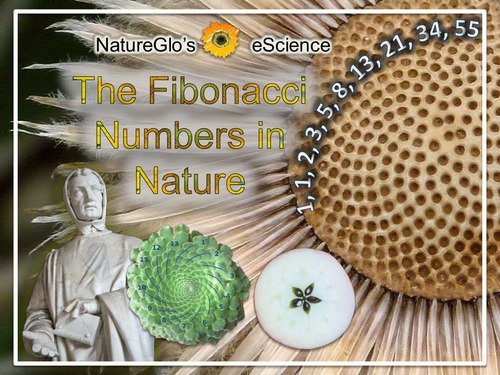







The Fibonacci number sequence has been astonishing and baffling mathematicians, nature lovers, scientists and the curious mind for ions. This number sequence was introduced by medieval, Italian, mathematician Leonardo of Pisa in his 1202 book, Liber Abaci (Book of Calculation). Along with the Hindu-Arabic numerals, which we use today (0 – 9), he introduced the east Indians use of the Fibonacci sequence through a famous problem about rabbit population growth. The sequence was named after him by number theorist Edouard Lucas in the 19th century.
The number sequence is achieved by adding each of two subsequent numbers together to acquire the next number. It begins with 0 or 1, but the east Indians preferred to start with 1. It goes like this: 1, 1, 2, 3, 5, 8, 13, 21, 34, 55 and into infinity!
This rather remarkable sequence is found all over nature, but especially in the plant kingdom. Most spirals grow by way of the Fibonacci sequence as its angles give the best sunlight exposure. Numbers of petals on flowers are many times Fibonacci numbers, such as 3 petals found on the Painted trillium, irises, and lilies, 5 found in buttercups, columbine and wild rose and 34 in plantains and pyrethrum.
The number of spirals turns, both clockwise and counterclockwise found in such familiar plants as pineapples, pinecones and sunflowers are usually Fibonacci numbers.
Come on a fascinating journey and learn about one of nature’s amazing codes for growth and life!
This unit includes the following:
1). A profusely and beautifully illustrated 13-page PowerPoint using photographs from nature (the PowerPoint is the main textbook for the unit study)
2). 18-page study guide with PowerPoint interaction questions
3). Connections with ancient history, math and nature
4). Journal Entry template
5). Web resources link page on the MathArt course website
6). NatureGlo’s eScience student project rubric
7). 20-page Lapbooking or Notebooking templates
9). Templates Answer Keys
9). One Quiz
10). PowerPoint Interaction Questions and Quiz answer keys
Something went wrong, please try again later.
This resource hasn't been reviewed yet
To ensure quality for our reviews, only customers who have purchased this resource can review it
Report this resourceto let us know if it violates our terms and conditions.
Our customer service team will review your report and will be in touch.
